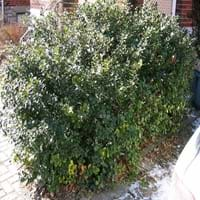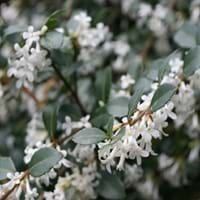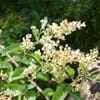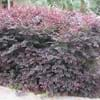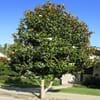Life Span
Perennial
Annual and Perennial
Type
Broadleaf Evergreen
Broadleaf Evergreen
Origin
Hybrid origin
China
Types
Ilex abscondita, Ilex aculeolata, Ilex affinis
Not Available
Number of Varieties
Not Available
Habitat
Subtropical climates, Woodland Garden Secondary, Woodlands
Lowland, shaded fields, Shaded sites, Slopes, Subtropical climates
USDA Hardiness Zone
5-9
7-99
AHS Heat Zone
Not Available
Not Available
Habit
Oval or Rounded
Oval or Rounded
Minimum Height
Not Available
Flower Color Modifier
Bicolor
Bicolor
Fruit Color
Red
Dark Blue, Black
Leaf Color in Spring
Dark Green
Gray Green, Dark Green
Leaf Color in Summer
Dark Green
Dark Green
Leaf Color in Fall
Dark Green
Gray Green, Dark Green
Leaf Color in Winter
Dark Green
Gray Green, Dark Green
Plant Season
Spring, Summer, Fall, Winter
Spring, Summer, Fall, Winter
Sunlight
Full Sun, Partial Sun, Partial shade
Full Sun, Partial Sun, Partial shade
Type of Soil
Loam
Clay, Loam, Sand
The pH of Soil
Acidic, Neutral
Acidic, Neutral, Alkaline
Soil Drainage
Well drained
Well drained
Bloom Time
Late Spring
Early Spring, Late Winter
Where to Plant?
Container, Ground, Pot
Ground, Pot
How to Plant?
Seedlings, Semi-ripe cuttings
Seedlings, Vegetative Reproduction
Plant Maintenance
Medium
Medium
Watering Requirements
Requires regular watering
Allow soil to be completely dry in between waterings, Requires watering in the growing season, Water Deeply, Water deeply about once a week
In Summer
Lots of watering
Lots of watering
In Spring
Moderate
Moderate
In Winter
Average Water
Average Water
Soil pH
Acidic, Neutral
Acidic, Neutral, Alkaline
Soil Type
Loam
Clay, Loam, Sand
Soil Drainage Capacity
Well drained
Well drained
Sun Exposure
Full Sun, Partial Sun, Partial shade
Full Sun, Partial Sun, Partial shade
Pruning
No pruning needed, Prune in early spring, Prune in winter, Remove damaged leaves, Remove dead branches, Remove dead leaves, Requires little pruning
Do not prune during shooting season, No pruning needed in the early stages, Prune to stimulate growth, Remove dead or diseased plant parts, Remove deadheads, Shape and thin as needed
Fertilizers
All-Purpose Liquid Fertilizer
All-Purpose Liquid Fertilizer
Pests and Diseases
Red blotch
Pests and diseases free
Plant Tolerance
Salt
Drought
Flowers
Insignificant
Showy
Flower Petal Number
Single
Single
Showy Fruit
Yes
Not Available
Foliage Texture
Medium
Fine
Foliage Sheen
Glossy
Glossy
Allergy
Diarrhea, Mildly Toxic, Vomiting
no allergic reactions
Aesthetic Uses
Cottage Garden, Showy Purposes, Used for making hedges
Beautification
Beauty Benefits
Not Available
Not Available
Environmental Uses
Air purification, Food for animals, Food for birds, Wildlife
Air purification
Medicinal Uses
Not Available
Antioxidants
Part of Plant Used
Fruits
Flowers, Fruits, Leaf Stalks, Leaves
Other Uses
Food for animals, Used for Landscaping
Culinary use, Used for fragrance, Used for producing cooking oil, Used as a spice
Used As Indoor Plant
No
Yes
Used As Outdoor Plant
Yes
Yes
Garden Design
Feature Plant, Foundation, Hedges, Mixed Border, Screening, Wind Break
Feature Plant, Foundation, Hedges, Mixed Border
Botanical Name
ILEX x meserveae 'Blue Princess'
OSMANTHUS delavayi
Common Name
Blue Princess Holly
Sweet Olive
Tea Olive
Fragrant Olive
In Hindi
BluePrincess Holly Plant
चाय ओलिव
In German
BluePrincess Holly Pflanze
Tea Olive
In French
BluePrincess houx Plante
Tea Olive
In Spanish
Planta del acebo BluePrincess
té verde oliva
In Greek
BluePrincess Holly Φυτών
τσάι Ελιάς
In Portuguese
BluePrincess Planta Holly
Tea Olive
In Polish
BluePrincess Holly roślin
Herbata z oliwek
In Latin
Planta BluePrincess Holly
Tea Olive
Phylum
Not Available
Magnoliophyta
Class
Not Available
Magnoliopsida
Order
Aquifoliales
Lamiales
Family
Aquifoliaceae
Oleaceae
Clade
Angiosperms, Eudicots
Angiosperms, Asterids, Eudicots
Tribe
Not Available
Not Available
Subfamily
Not Available
Not Available
Number of Species
Not Available
Importance of Blue Princess Holly and Tea Olive
Want to have the most appropriate plant for your garden? You might want to know the importance of Blue Princess Holly and Tea Olive. Basically, these two plants vary in many aspects. Compare Blue Princess Holly and Tea Olive as they differ in many characteristics such as their life, care, benefits, facts, etc. Every gardener must at least have the slightest clue about the plants he wants to plant in his garden. Compare their benefits, which differ in many ways like facts and uses. The medicinal use of Blue Princess Holly is Not Available whereas of Tea Olive is Antioxidants. Blue Princess Holly has beauty benefits as follows: Not Available while Tea Olive has beauty benefits as follows: Not Available.
Compare Facts of Blue Princess Holly vs Tea Olive
How to choose the best garden plant for your garden depending upon its facts? Here garden plant comparison will help you to solve this query. Compare the facts of Blue Princess Holly vs Tea Olive and know which one to choose. As garden plants have benefits and other uses, allergy is also a major drawback of plants for some people. Allergic reactions of Blue Princess Holly are Diarrhea, Mildly Toxic and Vomiting whereas of Tea Olive have no allergic reactions respectively. Having a fruit bearing plant in your garden can be a plus point of your garden. Blue Princess Holly has showy fruits and Tea Olive has no showy fruits. Also Blue Princess Holly is not flowering and Tea Olive is not flowering . You can compare Blue Princess Holly and Tea Olive facts and facts of other plants too.
